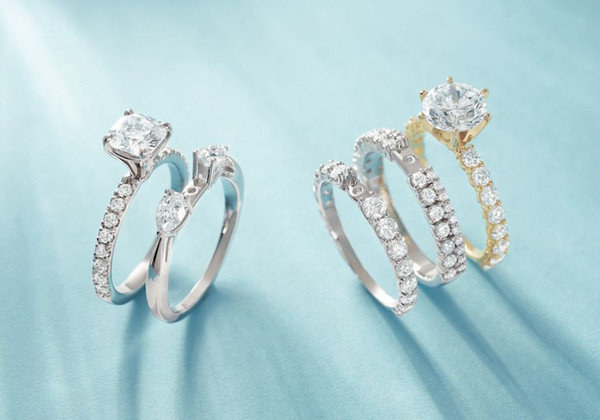Diamonds have long been the quintessential symbol of love and luxury, but there’s a newcomer in the world of gemstones that’s been turning heads: moissanite. In this article, we’ll delve into the characteristics, origins, costs, ethics, maintenance, environmental impact, and popularity of both Moissanite vs Diamond, helping you make an informed decision when choosing your next sparkler.
Introduction
Moissanite and diamonds may share a dazzling sparkle, but they have distinct differences that set them apart. Understanding these disparities can help you decide which gemstone is the right fit for you.
1. Properties
When it comes to comparing moissanite and diamonds, moissanite vs diamond, several key properties come into play.
1.1. Hardness
Diamonds are renowned for their exceptional hardness, scoring a perfect 10 on the Mohs scale. Moissanite comes close, ranking at 9.25, making it a highly durable alternative.
1.2. Brilliance
Both moissanite and diamonds exhibit brilliance, but moissanite often outshines diamonds in terms of fire and sparkle due to its higher refractive index.
2. Origins
Understanding the origins of these gemstones can provide insight into their uniqueness.
2.1. Natural
Diamonds are typically mined from the earth’s crust, formed under intense pressure and heat over millions of years. In contrast, moissanite is primarily synthesized in laboratories, although trace amounts can be found in meteorites.
2.2. Synthetic
Synthetic moissanite is produced through a process called chemical vapor deposition (CVD), where silicon carbide is heated until it forms crystals with properties similar to natural moissanite.
3. Cost
Cost is often a significant factor when choosing between Moissanite vs Diamond.
3.1. Initial Cost
Moissanite is considerably more affordable than diamonds, offering a budget-friendly alternative without compromising on beauty or durability.
3.2. Long-term
While diamonds may hold their value better over time, moissanite’s lower initial cost can offset any potential depreciation.
4. Ethics
Ethical considerations play a crucial role in the gemstone industry.
4.1. Conflict
Diamond mining has a history of fueling conflicts and human rights abuses in certain regions. Moissanite, on the other hand, man made diamonds, is often touted as a conflict-free alternative.
5. Maintenance
Proper maintenance ensures the longevity of your gemstone’s brilliance.
5.1. Durability
Both moissanite and diamonds are highly durable, but moissanite may be more resistant to chipping and scratching due to its slightly lower hardness.
5.2. Cleaning
Regular cleaning with mild soap and water can help maintain the sparkle of both Moissanite vs Diamond.
6. Environmental Impact
The environmental consequences of gemstone mining are a growing concern.
6.1. Mining
Diamond mining can have significant environmental repercussions, including habitat destruction and water pollution. Synthetic moissanite production, while not without its environmental footprint, generally has a lower impact than diamond mining.
7. Popularity
Consumer preferences and trends can influence the popularity of gemstones.
7.1. Fashion
Changing fashion trends often dictate the demand for particular gemstones, with moissanite gaining traction as a stylish and sustainable choice.
7.2. Celebrities
Celebrities and influencers have the power to shape public perception and drive demand for specific gemstones, with endorsements of moissanite contributing to its rising popularity.
Conclusion
Choosing between Moissanite vs Diamond ultimately boils down to personal preference, budget, and ethical considerations. Whether you opt for the timeless allure of diamonds or the affordability and sustainability of moissanite, both gemstones offer undeniable beauty and sparkle.



![What is the [pii_pn_f0a175b21b752538] Error Code?](https://ustechportal.com/wp-content/uploads/2021/06/How-to-solve-pii_email_cbd448bbd34c985e423c-error-code-1280x720.png)